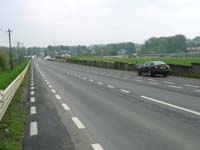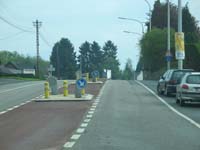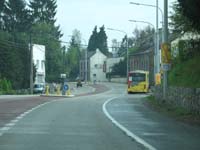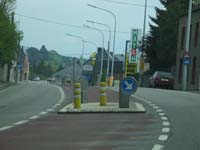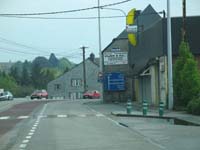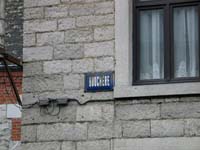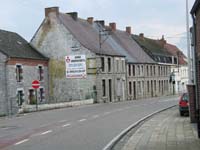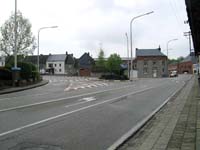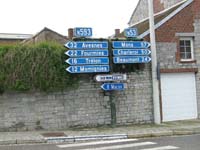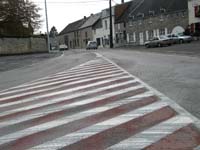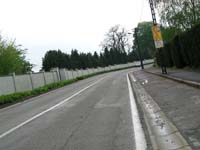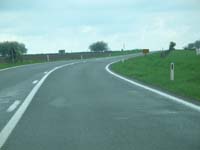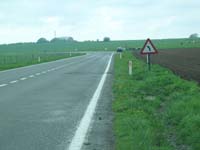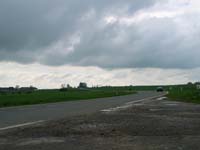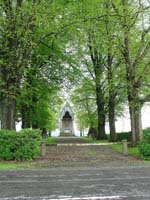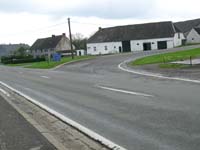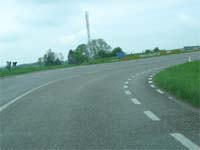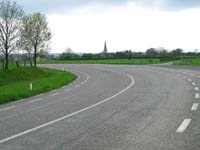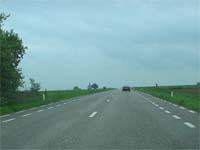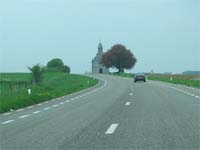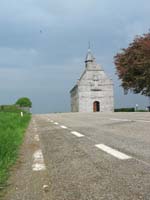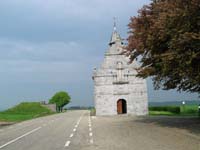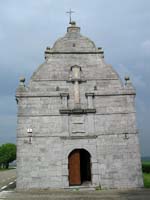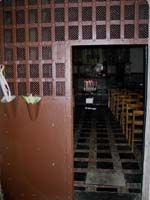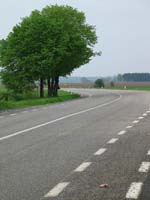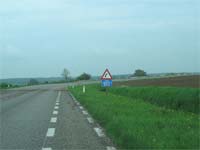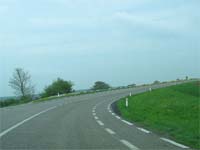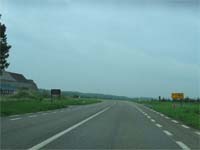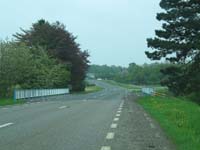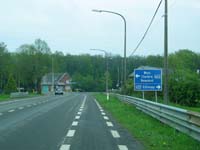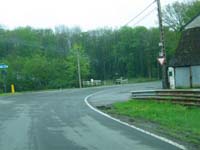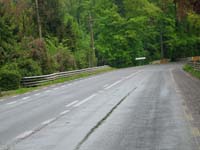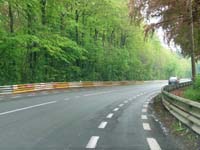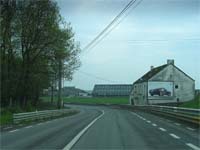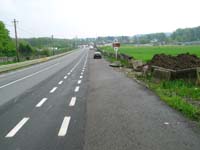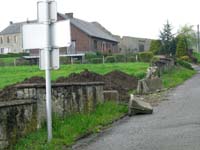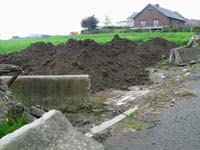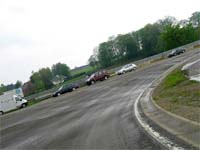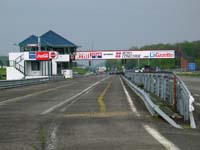Racing without frontiers
Author
- Mattijs Diepraam
Date
- May 13, 2006
Related articles
- Paul Frère - A stylist on tarmac and paper, by Felix Muelas/John Cross
- David Purley - Army heroics to car heroics, by Marc Ceulemans
- Maurice Trintignant - Le Petoulet's colourful career, by Mattijs Diepraam
Who?the author What?Skoda Octavia 4x4 turbo Where?Chimay When?May 7, 2006 |
 |
Why?
There are few small countries whose motorsport pedigree is bigger than could be expected from their modest size. Meet Austria or Finland – each have produced more World Champions than other nations with far larger populations. Or take Belgium, and especially its Walloon region – its motor racing heritage includes more than a few classic race tracks. Forget Nivelles or Zolder and instead track back to the times when Belgium contributed significantly to mainland Europe’s blossoming car racing scene. It gave the world its first closed-circuit event of note when Baron de Crawhez initiated the Circuit des Ardennes in 1902. And of course, the Spa-Francorchamps track is a jewel in the sport’s crown and remains so in its modern version.
In its own way, the Grand Prix des Frontières at Chimay is a deserving part of those glorious pre-war years of Belgium adding a sizeable chunk to Europe’s blooming motor racing landscape while neighbouring Holland was still a white spot on the map. And like Spa, it managed to survive well beyond the age when most circuits consisted of closed-off road sections, before their original lay-out finally fell foul of the seventies’ nascent safety consciousness.
Chimay is situated in the most southern part of Belgium’s Hainaut province. The small town, reigned for many centuries by the princes of Croÿ, is well known for its princely castle and its abbey beers, and used to hold a pivotal position between France and its nearby enclaves Philippeville and Mariembourg, the many German states, the prince-bishopric of Liège and the other Low Countries in its various Burgundian, Spanish, Austrian and independent guises. It makes the plural ‘Frontières’ all the more logical. So it is perhaps fitting that this event used to be a no-holds-barred dash to the finish, a top-speed thriller that kept its spectators on their toes for a finite, restricted amount of laps. No chance to get bored, it was over before you could take another breath. At Chimay drivers were indeed racing without frontiers.
Although the Grand Prix des Frontières remained a relatively minor event, the Chimay venue far outgrew its grass roots as a local event in the region south of Charleroi, and remarkably, it did so by keeping a low profile all through its colourful history, which went on to span near to half a century. It was the practicality of its organizers, the Auto Moto Club Beaumont, led for many years by track founder Jules Buisseret, that allowed the self-pronounced Grand Prix to survive for such a lengthy period. From the inaugural race on May 9, 1926 to the swansong event in 1972 this Border GP led a chameleon-like existence, catering to whatever category best fitted the bill at that particular junction in time – from sportscars to F2, from pukka Grand Prix cars to the cigar-shaped F3 machines that raced the track in its final eight years of use for racing cars before the motorbike races that traditionally shared the bill took over in full from 1973 on.
Buisseret’s business acumen led to the race being run to the premier category four years after its inception, Zehender winning for Alfa Romeo, but it never overstretched to attract the big stars. After George de Marotte and his Salmson GP won in 1930, the winner’s rostrum became the domain of privateer Bugatti runners such as Legat, Longueville (twice), Steinweg and Trintignant (also twice), interloped by Dutchman Eddie Hertzberger and his MG Magnette. An over-2000cc race was run in 1937, which was won by Hans Rüesch, whose 8C-35 had also been victorious in Helsinki the week before and would take another win at Bucharest two weeks after, the German enjoying a wonderful month-of-May minor-event winning spell.
After the war the event was run to Grand Prix regulations on three occasions. In 1946 Leslie Brooke won in his ERA while in 1949 local hero Guy Mairesse raced his T26C to home glory, the event preceding the Belgian GP by two weeks. The Grand Prix des Frontières became a Formula 2 event thereafter, returning to the Grand Prix calendar when the World Championship ran to F2 regs in 1952 and ’53. Frère (HWM) and Trintignant (Gordini) took the honours. Prince Bira and his Maserati A6CGM won the last F1 race at Chimay in 1954, before the event became sportscar and F Junior territory. From 1965 to 1973 the event was a classic on the international F3 calendar, with David Purley proving himself as a Chimay specialist of sorts, coming out on top of the slipstreaming battles on no less than three occasions.
It’s no wonder that those with a talent for high-speed circuits and a big heart to match would excel at Chimay. The circuit bears a striking resemblance to Reims-Gueux, some 60 miles dead South on the old Roman road into the Champagne region. Both circuits are basically triangular. Both, starting from a town-square base, headed far into the open country. Both also featured a collection of fast corners and hairpins connected by extremely long and fast straights. And both had their village sections eventually cut off in the interest of safety. But while Gueux was quickly bypassed to form the Grand Prix circuit shape that was used in the fifties and sixties heydays of Reims-Gueux, the Bouchère neighbourhood was only left in peace from 1985 on, when the original circuit was shortened to include the new start-and-finish straight and three chicanes at after Spikins, before Beauchamps and before Vidal. This caused a brief return of cars to the track when Belgian Group N paid a visit to Chimay. In 1996, the track that once was a 6.75-mile cannonball run finally morphed into a boring, rectangular 2.8-mile track blighted by yet more chicanes. This hosted a Belgian Procar race only once, before it resigned itself to welcoming an annual historic event in mid-July.
Circling Chimay today
While the new circuit is featureless and hardly offers any challenge, the old one isn’t very technical either. But it does require balls. It’s a typical old-school track of the ‘no guts, no glory’ kind, offering sinuating straights – only later sparsely lined with Armco – that lull their slipstreaming users into a false sense of security and simplicity, before cambered corners require their utmost concentration and precision. This is especially so with the La Bouchère hairpin, located on a junction in the western outskirts of Chimay. It comes unsighted at the end of an uphill run lined by houses before quickly dropping down into the off-camber corner that has remained virtually unchanged since the war years.
As the cars headed out of town into a wide-open space that allowed the drivers to see all the way to the slopes of Salles, their slipstreaming bonanza could begin. Especially in its dying days, when the circuit was a throwback to an era in which safety wasn’t even an afterthought, the leading car punching a hole in the air for a gaggle of rivaling designs of F3 breed must have been a spectacle to behold for any farmer walking his yard lining the track. It will have been a quick flash, similar to watching a Tour de France stage from the side of the road, but at least you would have seen a similar flash for 12-odd laps.
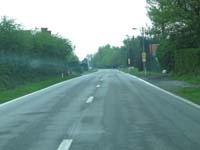 The first part of the 2.5-mile straight. |
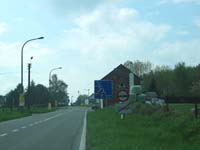 The flow of which is now interrupted by a roundabout. |
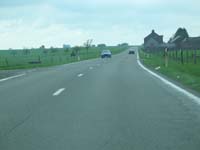 Once clear of those obstructions it’s a long and fast blast to the horizon. |
Salles is a tiny farmer village that is part of the Chimay municipality. It used to contain two of the most challenging corners of the circuit. Both are 90-degree righthanders, both are banked, and neither of them left any room for error. As a pair they formed the bottom left corner of the Chimay triangle – cars would negotiate them within a couple of seconds, only briefly straightlining on the connecting Rue de l’Etang before being slingshot towards the similarly small-sized village of Robéchies, which formed the top-hand corner of the triangle. The Rue Thierissart leading to Robéchies offered more profile compared to the huge Salles straight, as its modest slopes and curves are lined by the occasional line of trees and the Chimay circuit’s best-known landmark, the Chapelle de Nôtre-Dame de l’Arbrisseau.
Located at the highest point of the circuit, the Arbrisseau chapel formed an imposing sight for any driver going past it on a wing and a prayer.
The Rue Thierissart, or N595, continued with a fast lefthander following right behind the chapel, after which the only corner of note on this part of the triangle loomed in the distance – the Virage Mairesse, named after the unfortunate Willy Mairesse who in 1957 overcooked it here and, Armco not yet present, ended up in the field that is sloping down right behind the corner’s aggressive banking.
The top section of the track, bypassing the village of Robéchies, was probably the easiest part of the circuit. There are some left-and-right sweeps, like the one circling around the Saint-Rémy farm, but the undulation that gives the track an added attraction on most other sections is sorely missing here. In early times, a challenge of an entirely different kind would unsettle the drivers here – lining up in single file to cross Le Petit Pont, the narrow bridge heading over the Mons-Chimay railway. This would be widened in 1960, while the run-up to it was straightened out, shortening the circuit by 0.3 miles.
The Virage de Beauchamps would be the last corner before the plunge down to the finish line. It won’t have been a particularly difficult corner although it is hard find the correct apex at first. A few practice laps would have cured that. The following descent to Virage Vidal is spectacular, as it lined by trees and slowly leads us back into more habitated areas. From a driver’s point of view, however, it will have been fairly straightforward.
The new circuit is hardly deserving a mention compared to the old one. But it can’t be denied either because it is still so evidently there. Its basically rectangular shape and its awful back-straight chicanes, however, make it too bland to feature here, even though it is hosting a pair of historic events each July, organized by folk with their hearts in the right place.
The best memories of a track visit lie in the details. In the case of Chimay, it’s undoubted the Armco. Once erected as a pitiful and inadequate means to stop the circuit from becoming outdated, their current state are not just a reflection on Belgium’s breathtakingly poor standard of road maintenance but also on what was and will never be – racing without barriers or frontiers on road circuits designed by nature.
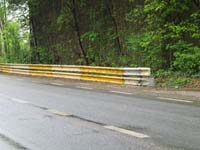 |
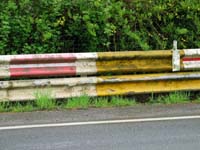 |
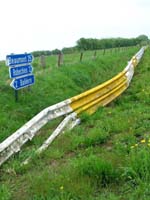
|

